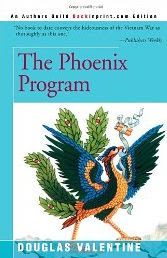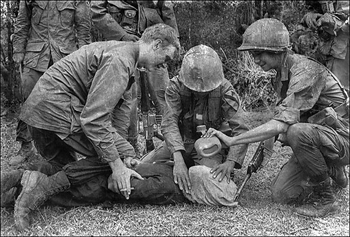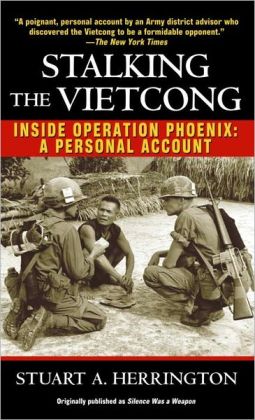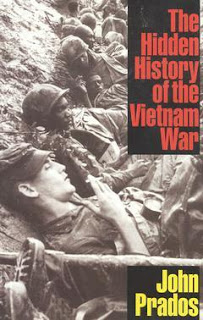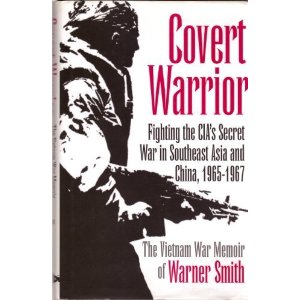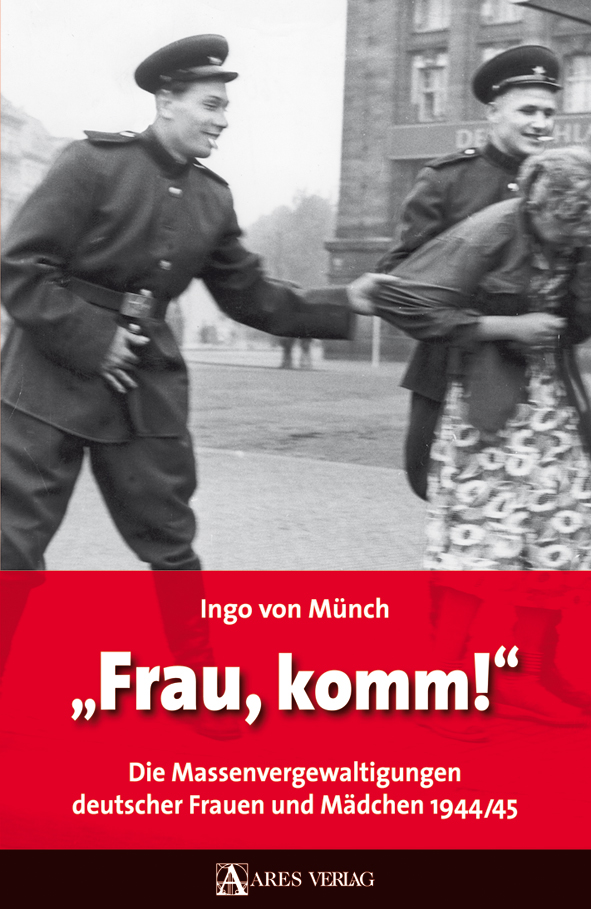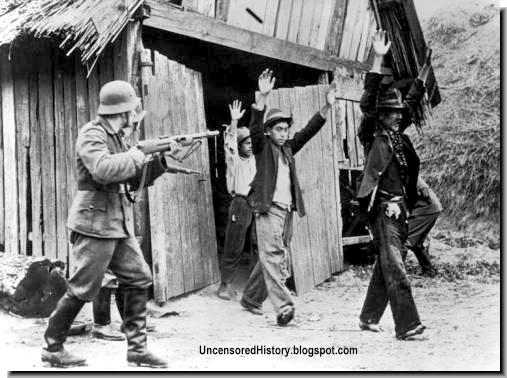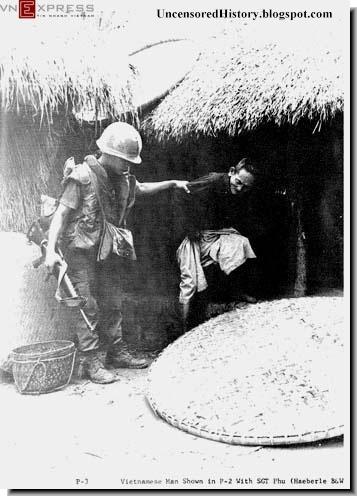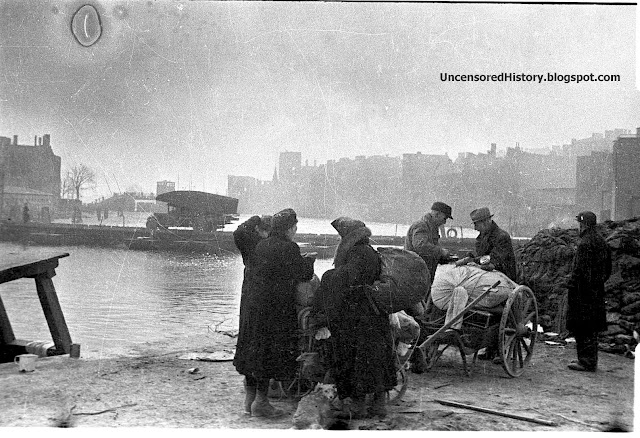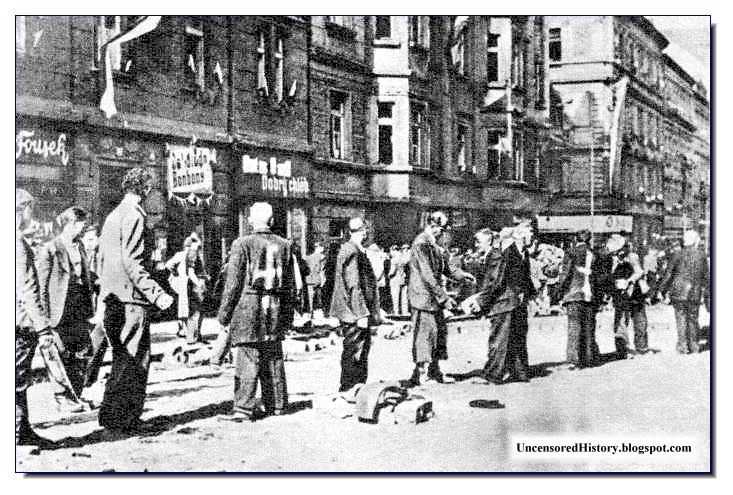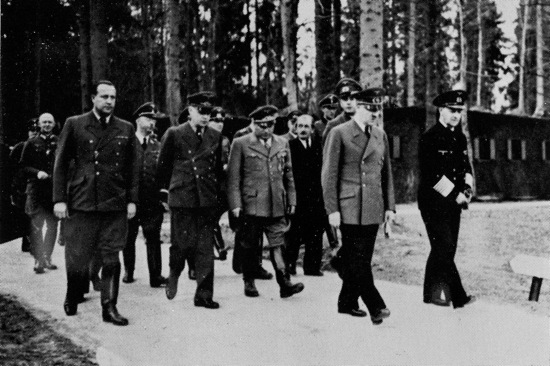The following excerpt from The Phoenix Program, by Douglas Valentine, is from Chapter 24: “Transgressions”. It deals with the My Lai massacre and the infamous “Tiger Cages.”
On August 25, 1970, an article appeared in The New York Times hinting that the CIA, through Phoenix, was responsible for My Lai. The story line was advanced on October 14, when defense attorneys for David Mitchell — a sergeant accused and later cleared of machine-gunning scores of Vietnamese in a drainage ditch in My Lai — citing Phoenix as the CIA’s “systematic program of assassination,” named Evan Parker as the CIA officer who “signed documents, certain blacklists,” of Vietnamese to be assassinated in My Lai.
The Phoenix coordinator in Quang Ngai Province at the time of the My Lai massacre was Robert B. Ramsdell, a seventeen-year veteran of the Army CID who subsequently worked for ten years as a private investigator in Florida. Ramsdell was hired by the CIA in 1967. He was trained in the United States and sent to Vietnam on February 4, 1968, as the Special Branch adviser in Quang Ngai Province. Ramsdell, who appeared incognito before the Peers panel, told newsmen that he worked for the Agency for International Development.
In "Cover-up" Seymour Hersh tells how in February 1968 Ramsdell began “rounding up residents of Quang Ngai City whose names appeared on Phoenix blacklists.” Explained Ramsdell: “After Tet we knew who many of these people were, but we let them continue to function because we were controlling them. They led us to the VC security officer for the district. We wiped them out after Tet and then went ahead and picked up the small fish.” The people who were “wiped out,” Hersh explains, were “put to death” by the Phoenix Special Police.”
http://www.whale.to/b/ph2.html
Even less well remembered is one mission in the CIA's Phoenix Program in Vietnam in July of 1968. A team of CIA psychologists set up shop at Bien Hoa Prison outside Saigon, where NLF suspects were being held after Phoenix Program round-ups. The psychologists performed a variety of experiments on the prisoners. In one, three prisoners were anaesthetized; their skulls were opened and electrodes implanted by CIA doctors into different parts of their brains. The prisoners were revived, placed in a room with knives and the electrodes in the brains activated by the psychiatrists, who were covertly observing them. The hope was that they could be prompted in this manner to attack each other. The experiments failed. The electrodes were removed, the patients were shot and their bodies burned.
The Phoenix Program was a CIA creation in Vietnam. It was not unlike the Einsatzgruppen. It consisted basically of killer squads. Eliminating selectively Vietcong leaders.

Operation Phoenix was designed with the stated objective to neutralize the NLF (National Liberation Front of South Vietnam, popularly known as the Vietcong), and it utilized infiltration, capturing, terrorizing, assassinating, converting, or killing to meet its objectives. More than 80,000 suspects were neutralized by the Phoenix operatives, killing more than 25,000 Vietnamese, and leaving the others disabled due to extreme torture. According to an internal communication, the intent of Operation Phoenix was to attack the NLF with a rifle rather than a shotgun to target the Vietnamese political leaders, command and control elements of the NLF activists.
http://famous101.com/famous-cia-operations
According to MACV Directive 381-41, the intent of Phoenix was to attack the NLF with a "rifle shot rather than a shotgun approach to target key political leaders, command/control elements and activists in the VCI."
Under the Phoenix Program, the CIA created and directed a secret police ostensibly run by the South Vietnamese. Its objective was to destroy the Viet Cong’s infrastructure. During the course of the program’s existence, the secret police units, operating as virtual death squads, were implicated in burnings, garroting, rape, torture, and sabotage. As many as 50,000 Vietnamese were killed. [PILGER, 1986, PP. 274; VALENTINE, 2000] The most decorated American soldier of the war, Lieutenant Colonel Anthony Herbert, later recaledl in his book, Soldier, “They wanted me to take charge of execution teams that wiped out entire families and tried to make it look as though the VC themselves had done the killing.” [PILGER, 1986, PP. 274]
WHAT WAS THE PHOENIX PROGRAM?
The Phoenix, legendary animal that comes to symbolize what rises from the ashes.
Covert paramilitary operations by the CIA in Vietnam began early in the sixties, but it was not until 1965, that the U.S. began developing terrestrial deployment, when the station was established at the headquarters of the American Embassy in Saigon. It was called OSA ("Office of Special Assistace"). Throughout the 44 provinces of South Vietnam, nearly thousand OSA agents would conduct various intelligence collection programs, political and covert operations.
Although some sources cite 1967 as the year when the Phoenix program was launched, it was not until January 1968, William Colby was sent to Vietnam by President Johnson and the CIA director Richard Helms with direct order from his office (in theory Colby came as ambassador) CORDS program ("Civil Operations and Rural Development Support"), the predecessor of Phoenix, and created by MACV ("Military Assistance Command Vietnam") in July 1967.
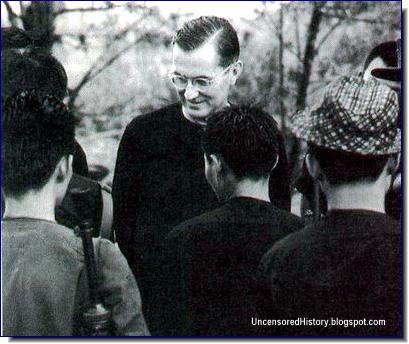 |
| William Colby in Vietnam |
Nelson H. Brickham, Chief of Field Operations Section intelligence liaison, and authentic creator of Phoenix, was the man who launched the following projects within CORDS:
- HIP ("Hamlet Informant Project"): The CIA and Special Branch (Vietnamese officials not operating as intelligence agents but as detectives) were engaged in recruiting informants throughout South Vietnam. The CIA informants paid only if the accused confessed that he was part of the Vietcong infrastructure (IVC).
- PIC ("Province Interrogation Center"): The CIA abducted political leaders, students, trade unionists and journalists close to the communist ideologies and recruit PIC centers that were built torture chambers in all provinces of South Vietnam by the architectural firm specializing in the construction of bunkers and prisons "Pacific Architects & Enginners".
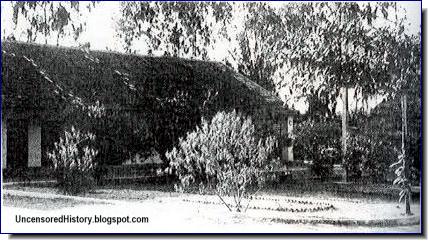 |
| A PIC: The place where Vietcong were tortured |
- PVI ("Vietcong Infrastructure Penetrations"): The IVC was attacked putting pressure on family members or on their people. Once arrested a member of VC, was tortured until he gave the name of his people and their families. Once done, the members of the Special Division conducted a raid, the captured (most were usually women) and were raped in front of the detainee This program was directed personally by Brickham.
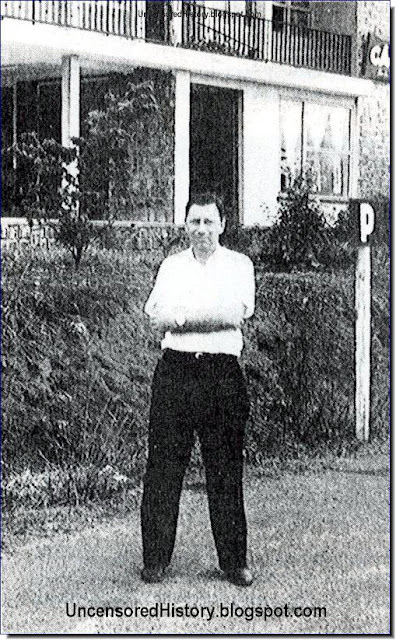 |
| "The bad guy". Nelson Brickham |
Meanwhile, the head of the CIA station in Saigon, John Limond Hart, had its own covert action program, which was coordinated by his deputy, Tom Donahue. This program clashed often with that of Brickham, despite having much larger budget was less effective, partly because Hart used paramilitary Cubans from the Bay of Pigs, rather than South Vietnamese staff.
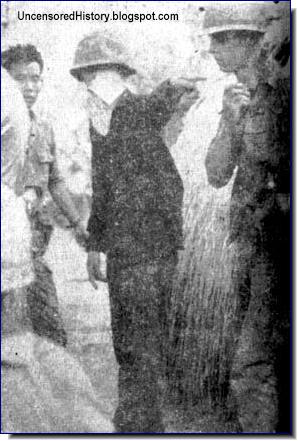 |
| A captured Vietcong squeaks on his comrades |
To end this competition, Colby decided on arrival to unify all covert CIA operations programs in South Vietnam under the name of PHOENIX. It was necessary to unite the efforts of the CIA, the FAS of the U.S., South Vietnamese Special Branch, and the Central Intelligence Organization of Vietnam.
The Phoenix program in its infancy was called ICEX ("Intelligence Coordination and Explotation"), and although it was under command of the army, it had its own chain of command, directed by William Colby himself.
The first step by the CIA was the creation of the PRU ("Provincial Reconnaissance Units") paramilitary units comprising of volunteers South Vietnamese soldiers and Americans SEALS , whose mission was to attack the enemy in their territory, in rural areas.
 |
| Delta PRU adviser John Wilbur with the Kien Hoa Province PRU team in 1967 |
There were also special units operating independently called CT ("Counter-Terror Teams") consisting of a sniper, an observer and a transmission specialist. These teams closely guarded suspects filtered by the HIP, and if they met with members of the VC, they were eliminated. It is estimated that these units "removed" upto 3,000 civilians. Given its effectiveness, CT Colby received authorization to go into North Vietnamese territory to target high ranking Communist military or administration officials.
 |
| Member of a special Phoenix team, displaying Phoenix tattoo |
One of the biggest successes of Phoenix was a program called "Chieu Hoi" or "open arms Programme", which was to provide money to middle and high ranking communists to become South Vietnamese allies. It is believed that some 159,000 members of the Communist organization joined the program, 15,000 of them were members of the NVA ("North Vietnamese Army")
Intelligence was gathered and transmitted by PIOCC ("Province Intelligence and Operations Coordination Centers") or its subordinate DIOCC ("District Intelligence and Operations Coordination Centers")
With the goal of transferring control to the South Vietnamese PHOENIX because of the growing "Vietnamization" of the conflict, members of the CIA were gradually replaced by elements of the U.S. military, mostly from the Special Forces. The handover took place in August 1971, taking the reins of the regular army, special forces and the South Vietnamese police. The program then became known by its Vietnamese name, "Hoang Pjung".
The Phoenix program was widely criticized by groups opposed to the war, considering it was a program of murders with indiscriminate brutality and constant violation of international law.
It is believed that the program was active until December 1972, although in some respects it was alive until the day of the fall of Saigon on 30 April 1975.
----------------------------------------------
By Douglas Valentine
Extract: Introduction
It was well after midnight. Elton Manzione, his wife, Lynn, and I sat at their kitchen table, drinking steaming cups of coffee. Rock 'n' roll music throbbed from the living room. A lean, dark man with large Mediterranean features, Elton was chain-smoking Pall Malls and telling me about his experiences as a twenty-year-old U.S. Navy SEAL in Vietnam in 1964. It was hot and humid that sultry Georgia night, and we were exhausted; but I pressed him for more specific information. "What was your most memorable experience?" I asked.
Elton looked down and with considerable effort, said quietly, "There's one experience I remember very well. It was my last assignment. I remember my last assignment very well.
"They," Elton began, referring to the Navy commander and Special Forces colonel who issued orders to the SEAL team, "called the three of us [Elton, Eddie Swetz, and John Laboon] into the briefing room and sat us down. They said they were having a problem at a tiny village about a quarter of a mile from North Vietnam in the DMZ. They said some choppers and recon planes were taking fire from there. They never really explained why, for example, they just didn't bomb it, which was their usual response, but I got the idea that the village chief was politically connected and that the thing had to be done quietly.
"We worked in what were called hunter-killer teams," Elton explained. "The hunter team was a four-man unit, usually all Americans, sometimes one or two Vietnamese or Chinese mercenaries called counterterrorists -- CTs for short. Most CTs were enemy soldiers who had deserted or South Vietnamese criminals. Our job was to find the enemy and nail him in place -- spot his position, then go back to a prearranged place and call in the killer team. The killer team was usually twelve to twenty-five South Vietnamese Special Forces led by Green Berets. Then we'd join up with the killer team and take out the enemy."
But on this particular mission, Elton explained, the SEALs went in alone. "They said there was this fifty-one-caliber antiaircraft gun somewhere near the village that was taking potshots at us and that there was a specific person in the village operating the gun. They give us a picture of the guy and a map of the village. It's a small village, maybe twelve or fifteen hooches. 'This is the hooch,' they say. 'The guy sleeps on the mat on the left side. He has two daughters.' They don't know if he has a mama-san or where she is, but they say, 'You guys are going to go in and get this guy. You [meaning me] are going to snuff him.' Swetz is gonna find out where the gun is and blow it. Laboon is gonna hang back at the village gate covering us. He's the stoner; he's got the machine gun. And I'm gonna go into the hooch and snuff this guy
"'What you need to do first,' they say, 'is sit alongside the trail [leading from the village to the gun] for a day or two and watch where this guy goes. And that will help us uncover the gun.' Which it did. We watched him go right to where the gun was. We were thirty yards away, and we watched for a while. When we weren't watching, we'd take a break and go another six hundred yards down the trail to relax. And we did that for maybe two days -- watched him coming and going -- and got an idea of his routine: when he went to bed; when he got up; where he went. Did he go behind the hooch to piss? Did he go into the jungle? That sort of thing.
"They told us, 'Do that. Then come back and tell us what you found out.' So we went back and said, 'We know where the gun is,' and we showed them where it was on the map. We were back in camp for about six hours, and they said, 'Okay, you're going out at o-four-hundred tomorrow. And it's like we say, you [meaning me] are going to snuff the guy, Swetz is going to take out the gun, and Laboon's going to cover the gate.'"
Elton explained that on special missions like this the usual procedure was to "snatch" the targeted VC cadre and bring him back to Dong Ha for interrogation. In that case Elton would have slipped into the hooch and rendered the cadre unconscious, while Swetz demolished the antiaircraft gun and Laboon signaled the killer team to descend upon the village in its black CIA-supplied helicopters. The SEALs and their prisoner would then climb on board and be extracted.
In this case, however, the cadre was targeted for assassination.
"We left out of Cam Lo," Elton continued. "We were taken by boat partway up the river and walked in by foot -- maybe two and a half, three miles. At four in the morning we start moving across an area that was maybe a hundred yards wide; it's a clearing running up to the village. We're wearing black pajamas, and we've got black paint on our faces. We're doing this very carefully, moving on the ground a quarter of an inch at a time -- move, stop, listen; move, stop, listen. To check for trip wires, you take a blade of grass and put it between your teeth, move your head up and down, from side to side, watching the end of the blade of grass. If it bends, you know you've hit something, but of course, the grass never sets off the trip wire, so it's safe.
"It takes us an hour and a half to cross this relatively short stretch of open grass because we're moving so slowly. And we're being so quiet we can hardly hear each other, let alone anybody else hearing us. I mean, I know they're out there -- Laboon's five yards that way, Swetz is five yards to my right -- but I can't hear them.
"And so we crawl up to the gate. There's no booby traps. I go in. Swetz has a satchel charge for the fifty-one-caliber gun and has split off to where it is, maybe sixty yards away. Laboon is sitting at the gate. The village is very quiet. There are some dogs. They're sleeping. They stir, but they don't even growl. I go into the hooch, and I spot my person. Well, somebody stirs in the next bed. I'm carrying my commando knife, and one of the things we learned is how to kill somebody instantly with it. So I put my hand over her mouth and come up under the second rib, go through the heart, give it a flick; it snaps the spinal cord. Not thinking! Because I think 'Hey!' Then I hear the explosion go off and I know the gun is out. Somebody else in the corner starts to stir, so I pull out the sidearm and put it against her head and shoot her. She's dead. Of course, by this time the whole village is awake. I go out, waiting for Swetz to come, because the gun's been blown. People are kind of wandering around, and I'm pretty dazed. And I look back into the hooch, and there were two young girls. I'd killed the wrong people."
Elton Manzione and his comrades returned to their base at Cam Lo. Strung out from Dexedrine and remorse, Elton went into the ammo dump and sat on top of a stack of ammunition crates with a grenade, its pin pulled, between his legs and an M-16 cradled in his arms. He sat there refusing to budge until he was given a ticket home.
***
In early 1984 Elton Manzione was the first person to answer a query I had placed in a Vietnam veterans' newsletter asking for interviews with people who had served in the Phoenix program. Elton wrote to me, saying, "While I was not a participant in Phoenix, I was closely involved in what I think was the forerunner. It was part of what was known as OPLAN 34. This was the old Leaping Lena infiltration program for LRRP [long-range reconnaissance patrol] operations into Laos. During the time I was involved it became the well-known Delta program. While all this happened before Phoenix, the operations were essentially the same.Our primary function was intelligence gathering, but we also carried out the 'undermining of the infrastructure' types of things such as kidnapping, assassination, sabotage, etc.
"The story needs to be told," Elton said, "because the whole aura of the Vietnam War was influenced by what went on in the 'hunter-killer' teams of Phoenix, Delta, etc. That was the point at which many of us realized we were no longer the good guys in the white hats defending freedom -- that we were assassins, pure and simple. That disillusionment carried over to all other aspects of the war and was eventually responsible for it becoming America's most unpopular war."
***
The story of Phoenix is not easily told. Many of the participants, having signed nondisclosure statements, are legally prohibited from telling what they know. Others are silenced by their own consciences. Still others are professional soldiers whose careers would suffer if they were to reveal the secrets of their employers. Falsification of records makes the story even harder to prove. For example, there is no record of Elton Manzione's ever having been in Vietnam. Yet, for reasons which are explained in my first book, The Hotel Tacloban, I was predisposed to believe Manzione. I had confirmed that my father's military records were deliberately altered to show that he had not been imprisoned for two years in a Japanese prisoner of war camp in World War II. The effects of the cover-up were devastating and ultimately caused my father to have a heart attack at the age of forty-five. Thus, long before I met Elton Manzione, I knew the government was capable of concealing its misdeeds under a cloak of secrecy, threats, and fraud. And I knew how terrible the consequences could be.
Then I began to wonder if cover-ups like the one concerning my father had also occurred in the Vietnam War, and that led me in the fall of 1983 to visit David Houle, director of veteran services in New Hampshire. I asked Dave Houle if there was a part of the Vietnam War that had been concealed, and without hesitation he replied, "Phoenix." After explaining a little about it, he mentioned that one of his clients had been in the program, then added that his client's service records -- like those of Elton Manzione's and my father's -- had been altered. They showed that he had been a cook in Vietnam.
I asked to meet Houle's client, but the fellow refused. Formerly with Special Forces in Vietnam, he was disabled and afraid the Veterans Administration would cut off his benefits if he talked to me.
That fear of the government, so incongruous on the part of a war veteran, made me more determined than ever to uncover the truth about Phoenix, a goal which has taken four years to accomplish. That's a long time to spend researching and writing a book. But I believe it was worthwhile, for Phoenix symbolizes an aspect of the Vietnam War that changed forever the way Americans think about themselves and their government.
Developed in 1967 by the Central Intelligence Agency (CIA), Phoenix combined existing counterinsurgency programs in a concerted effort to "neutralize" the Vietcong infrastructure (VCI). The euphemism "neutralize" means to kill, capture, or make to defect. The word "infrastructure" refers to those civilians suspected of supporting North Vietnamese and Vietcong soldiers like the one targeted in Elton Manzione's final operation. Central to Phoenix is the fact that it targeted civilians, not soldiers. As a result, its detractors charge that Phoenix violated that part of the Geneva Conventions guaranteeing protection to civilians in time of war. "By analogy," said Ogden Reid, a member of a congressional committee investigating Phoenix in 1971, "if the Union had had a Phoenix program during the Civil War, its targets would have been civilians like Jefferson Davis or the mayor of Macon, Georgia."
Under Phoenix, or Phung Hoang, as it was called by the Vietnamese, due process was totally nonexistent. South Vietnamese civilians whose names appeared on blacklists could be kidnapped, tortured, detained for two years without trial, or even murdered, simply on the word of an anonymous informer. At its height Phoenix managers imposed quotas of eighteen hundred neutralizations per month on the people running the program in the field, opening up the program to abuses by corrupt security officers, policemen, politicians, and racketeers, all of whom extorted innocent civilians as well as VCI. Legendary CIA officer Lucien Conein described Phoenix as "A very good blackmail scheme for the central government. 'If you don't do what I want, you're VC."'
Because Phoenix "neutralizations" were often conducted at midnight while its victims were home, sleeping in bed, Phoenix proponents describe the program as a "scalpel" designed to replace the "bludgeon" of search and destroy operations, air strikes, and artillery barrages that indiscriminately wiped out entire villages and did little to "win the hearts and minds" of the Vietnamese population. Yet, as Elton Manzione's story illustrates, the scalpel cut deeper than the U.S. government admits. Indeed, Phoenix was, among other things, an instrument of counterterror -- the psychological warfare tactic in which VCI members were brutally murdered along with their families or neighbors as a means of terrorizing the neighboring population into a state of submission. Such horrendous acts were, for propaganda purposes, often made to look as if they had been committed by the enemy.
This book questions how Americans, who consider themselves a nation ruled by laws and an ethic of fair play, could create a program like Phoenix. By scrutinizing the program and the people who participated in it and by employing the program as a symbol of the dark side of the human psyche, the author hopes to articulate the subtle ways in which the Vietnam War changed how Americans think about themselves. This book is about terror and its role in political warfare. It will show how, as successive American governments sink deeper and deeper into the vortex of covert operations -- ostensibly to combat terrorism and Communist insurgencies -- the American people gradually lose touch with the democratic ideals that once defined their national self-concept. This book asks what happens when Phoenix comes home to roost.
-----------------------------------
Common methods of torture used at the interrogation centers included:
"Rape, gang rape, rape using eels, snakes, or hard objects, and rape followed by murder; electric shock ('the Bell Telephone Hour') rendered by attaching wires to the genitals or other sensitive parts of the body, like the tongue; the 'water treatment'; the 'airplane' in which the prisoner's arms were tied behind the back, and the rope looped over a hook on the ceiling, suspending the prisoner in midair, after which he or she was beaten; beatings with rubber hoses and whips; the use of police dogs to maul prisoners."
Military intelligence officer K. Milton Osborne witnessed the following use of torture:
"The use of the insertion of the 6-inch dowel into the canal of one of my detainee's ears, and the tapping through the brain until dead. The starvation to death (in a cage), of a Vietnamese woman who was suspected of being part of the local political education cadre in one of the local villages ... The use of electronic gear such as sealed telephones attached to ... both the women's vaginas and men's testicles [to] shock them into submission."
The torture was usually carried out by South Vietnamese with the CIA and special forces playing a supervisory role.
----------------------------
Suggesting Reading








